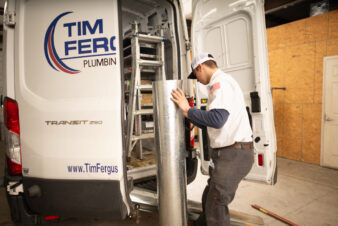
Many plumbing and renewable energy professionals know that solar thermal technology is a fantastic way to help their customers save on their energy bills and go green at the same time. If you are one of them, have you ever made a sale of a solar thermal system — or worse, lost one — without having had a good way to address the customer’s concern about quantifying the output and savings from the system?
This is a common refrain across the contractor community, on account of the high cost and complexity of existing monitoring solutions. A study in Massachusetts found that the average installed cost for residential solar thermal monitoring was over $1,100 — up to 15% of the total system cost. This same study found that 50% of the units did not initially function properly, usually on account of installation error. It is small wonder that less than 5% of residential solar thermal systems in the US have a monitoring system installed with them.
Sunnovations, McLean, Va., thinks it has come up with a solution to this problem in its new Ohm system. Ohm is designed to be much lower cost, easier to install and reliable than comparable systems, while also providing remote performance monitoring capability via a web-based dashboard.
The current technology paradigm in solar thermal monitoring is to measure the flow rate in the “solar loop” and extrapolate that rate into a measurement of solar energy put into the hot water tank. This approach is both inexact – it provides only an indirect measurement of energy input – and expensive, as flow meters are costly and time consuming to install. The Ohm system eliminates the flow meter and instead uses a patent-pending, in-tank sensor to directly measure the energy in the hot water tank.
The Ohm approach has multiple advantages. The installation process, whether in a new system or as a retrofit, is estimated to take 20 to 30 minutes as there is no pipe cutting or solar system draining required, down from the 3 to 4 hours needed for a traditional monitoring system. The installed cost for Ohm is designed to be less than half of comparable systems, on account of its simple design and decreased installation time. Lastly, users have unprecedented insight into water heating energy production and usage, as the in-tank sensor “sees” how much energy the sun provides versus the backup heating element. All of this is shown in a user-friendly dashboard that displays system performance and lifetime cost savings.
Adoption of solar thermal in the US has been hampered by the lack of a cost effective and reliable way to demonstrate and ensure system performance. With new approaches like Sunnovations’ Ohm system, plumbing and renewable energy professionals will never need to lose sales for want of a solution to this issue.
Matt Carlson is CEO of Sunnovations. For more information, he can be reached at matt@sunnovations.com or visit the website at http://ohm.sunnovations.com.




Join the conversation: